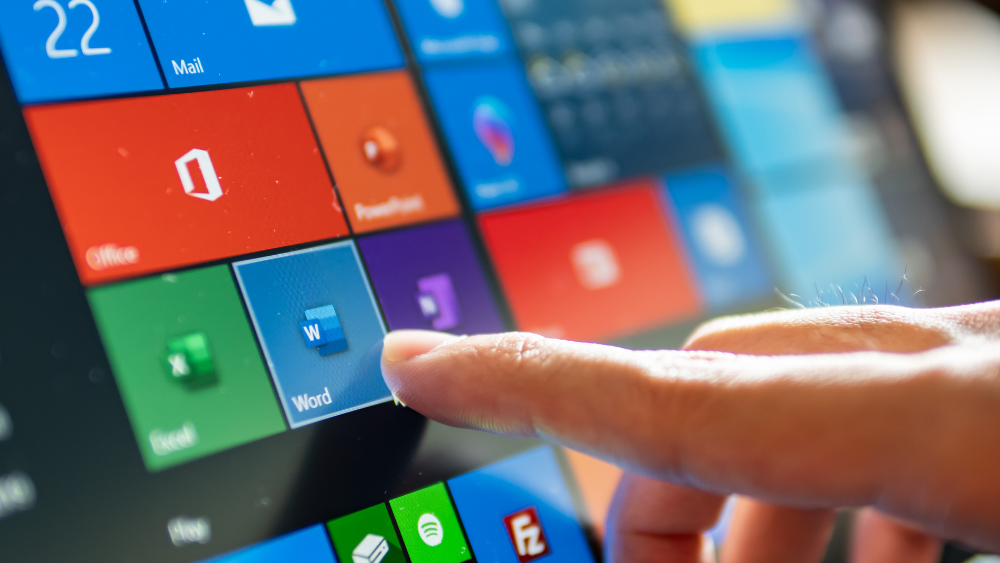Insights
INSIGHTS
All Topics
My Account
A complete guide to Microsoft 365
13 Dec 2021by Aidan Paterson
Everyone is familiar with the traditional Office suite of PowerPoint, Excel, and Word. We explore what else Microsoft 365 gives you access to
For many charity workers, the Microsoft 365 suite of programs will have been constant companions throughout our working lives. It’s hard to picture work without some of the more popular Microsoft products. No matter where you work, or what you’re doing, at some point you’re probably going to have to open up Powerpoint, Excel, or Word.
Because of this, when we hear the name ‘Microsoft 365’ or ‘Office 365’, it is this central group of basic Office applications that come to mind first.
Who could forget Michael Scott’s painfully thorough guide to opening PowerPoint in ‘The Office’?
But Microsoft’s offering has evolved over the years and a subscription to Microsoft 365 gives you access to so much more.
We look at what’s on offer and examine how charities have been using Microsoft 365 to meet challenges of operations and service delivery.
The availability of different products or services will depend on your subscription. Check out our information on finding the right subscription for your organisation to learn more.
Microsoft Teams
If you’re not familiar with Microsoft Teams at this point then you’re either living under a rock or using Zoom.
Microsoft Teams is an all-in-one communications solution favoured by many charities. Teams became increasingly popular in 2020 as organisations switching to remote working have latched onto its collaboration and communications functionality. Some organisations have found Microsoft Teams to be integral to their continued operations in the wake of COVID-19 lockdowns and social distancing restrictions.
Teams features instant messaging, voice chat, video conferencing, file sharing, and storage tools.
For charities using Microsoft 365, Teams is automatically integrated into existing apps. Outlook, for example, will block out diary times for appointments made on Teams.
Charities such as Scunthorpe and District Mind have used Microsoft Teams to deliver services digitally. With COVID-19 prohibiting much face-to-face charity work, organisations such as Mind have turned to Teams to bridge the gap. They have found a number of benefits to the technology, such as the ability to reach geographically-isolated service users, or people who have difficulty with mobility.
Christ Church Virginia Water is using Microsoft Teams to enable faster and easier communication between staff members. This includes sharing screens on conference calls, instant messaging and quick and easy file-sharing.
These communication and collaboration tools have been vital in allowing Christ Church Virginia Water to quickly establish a plan of action and roll out digital services. With easy access to conference calls and simple-to-use file sharing, the charity has been able to work together remotely - collaborating on projects in real-time.
SharePoint
SharePoint is a well-known file-sharing and collaboration tool. It is most commonly used as a storage solution for digital documents but can be heavily customised or used differently depending on the organisation.
Part of the appeal of Microsoft 365 for small charities is the increased capacity for remote work and collaboration that comes from pooling cloud-based resources.
Christ Church Virginia Water was experiencing file-sharing and collaboration issues. Initially, they were using Dropbox as a solution. Despite liking aspects of the platform, they found that the storage space they could afford was insufficient for their needs. Expanding their storage with the platform would have been prohibitively expensive and would have created further obstacles to collaborative remote work. The charity purchased subscriptions to Microsoft 365 Business Premium. Initially, they identified Outlook and Sharepoint as a solution to their file-sharing issues.
Sharepoint enabled the dispersed team at Guts UK to easily share research and other documents. The ability to have multiple users edit a document at the same time naturally led to a more collaborative working process, which improved communication - something that extended to working arrangements between the charity’s two offices.
Samaritans have also used SharePoint as a file-sharing solution to enable remote and collaborative working during the pandemic.
Outlook
When working remotely, communication is more important than ever. It can be difficult to juggle an organisation’s calendars manually. Luckily, Outlook allows charity workers to keep abreast of colleague’s schedules.
This personal information management app is best known for its popular email server. But Outlook provides much more, including calendar functionality and contact and task management services.
Easthall Resident’s Association found Outlook useful for communications, both internally between team members and externally with partners and service users.
Guts UK also found that Outlook’s calendar functionality gave their relatively small team increased visibility - which enabled everyone to cover holidays and keep on track for big events.
Outlook’s integrated calendar and email functionality keep teams aligned. Microsoft 365’s communications tools have enabled Christ Church Virginia Water to respond dynamically to the challenges of the new normal and to provide vital support to their local community when they needed it most.
OneNote
OneNote might sound basic – it’s a simple notepad device – but because it syncs across all devices it can be extremely convenient.
We’ve all been in situations where you need to finish a report or jot something down for later, but can’t find your notes. With OneNote, everything you need is available in a convenient centralised location.
This means there’s no delay and employee productivity is increased.
The only downside? There’s no longer any excuse for forgetting your notes!
Sway
One of Microsoft’s less well-known offerings, Sway is a graphic design app that allows users to express ideas using an interactive, web-based canvas.
It can function as a more collaborative and design-oriented version of PowerPoint. Sway’s flexible design engine helps users to quickly and easily produce professional, interactive, and visually appealing designs such as newsletters and presentations.
The main benefit of Sway, as opposed to tools such as Publisher or PowerPoint, is that it requires little to no design experience to create something impressive.
The app automatically adds your content such as images, text, video, social media posts, or even entire PowerPoint presentations and it creates a design for you to tweak as you wish.
This makes it perfect for charities that want to create something fun and informative (possibly with the help of their supporters), but are challenged in terms of time and design expertise.
Alternatively, if you have a bit more time on your hands you can start with one of many blank templates and use the Sway editor.
Kingston Voluntary Action used it when hosting their Hack Day, which saw attendees learn about all things data and explore how their charity or community group can use it better.
Enterprise-Level Security
This is one thing that you might not associate with a subscription to Microsoft 365.
Some higher-tier subscriptions (such as ) come with enterprise-level security.
This will most likely apply to larger nonprofits that require desktop-based apps.
Microsoft Security can help larger organisations consolidate and streamline their cyber security plans. The solution can allow charities to replace up to 40 separate solutions and replace them with a single application.
Microsoft Security uses cutting-edge AI to automatically remediate up to 97% of endpoint protection. The solution runs seamlessly in the background, allowing cyber security teams to focus their attention on the most pressing cases.
Find out more
Discover how charities can receive discounted subscriptions to Microsoft 365 through the Charity Digital Exchange
Aidan Paterson
More on this topic
Related Content
Recommended Products
Related Videos
Our Events
Charity Digital Academy
Our courses aim, in just three hours, to enhance soft skills and hard skills, boost your knowledge of finance and artificial intelligence, and supercharge your digital capabilities. Check out some of the incredible options by clicking here.





















